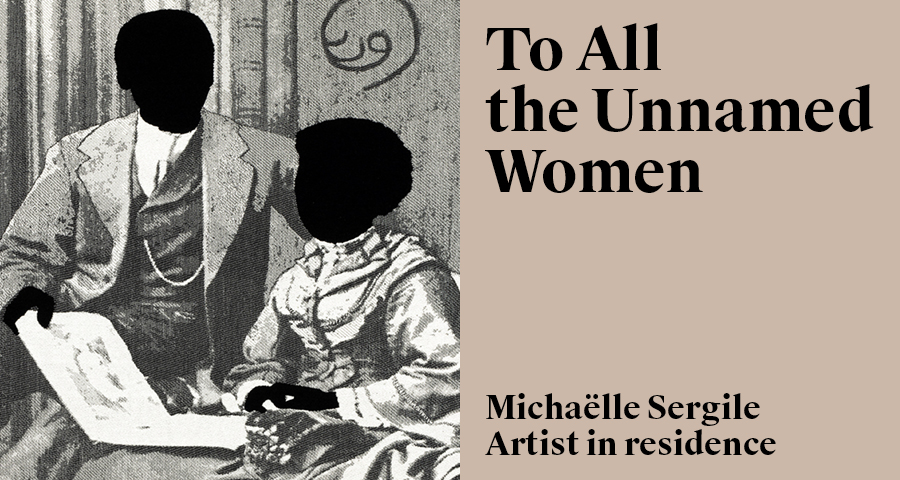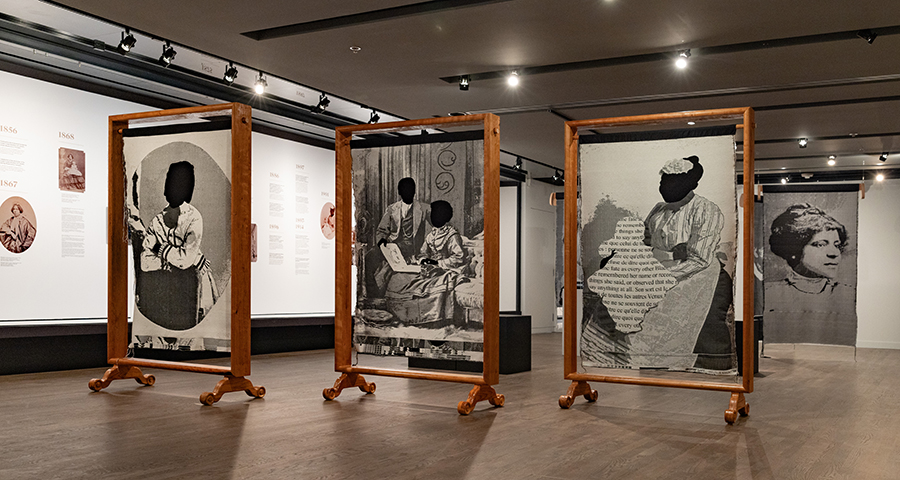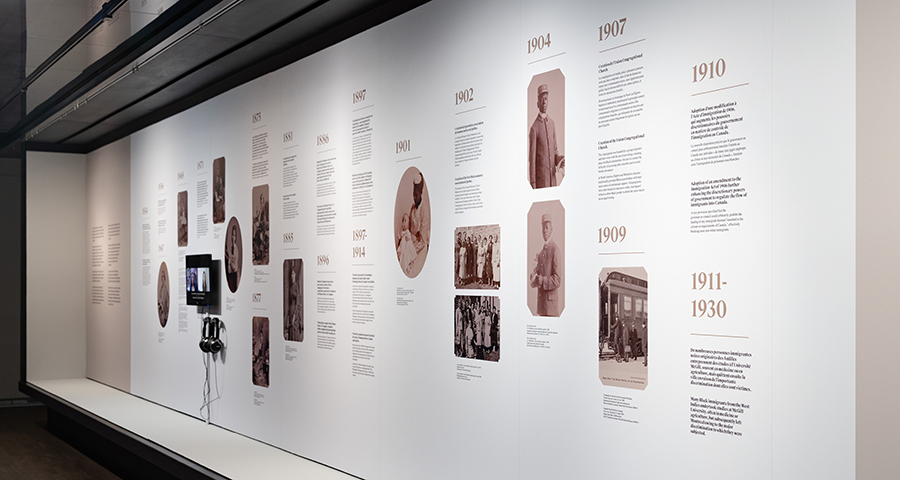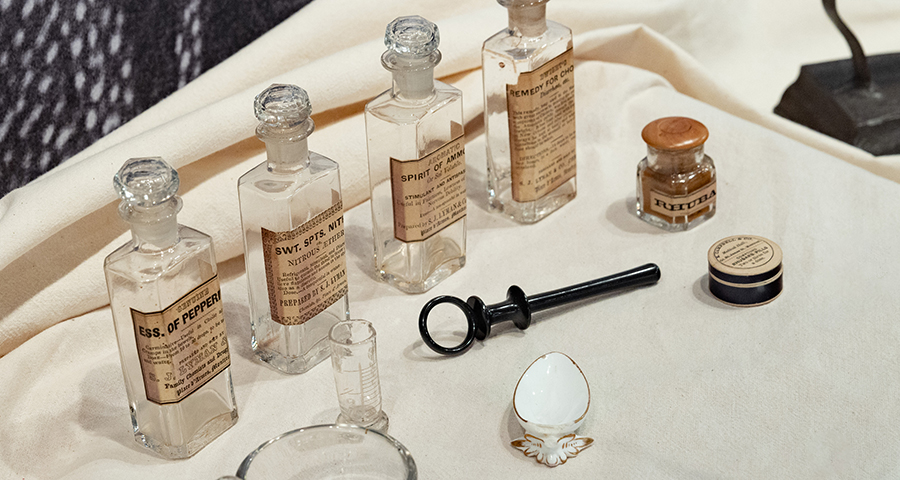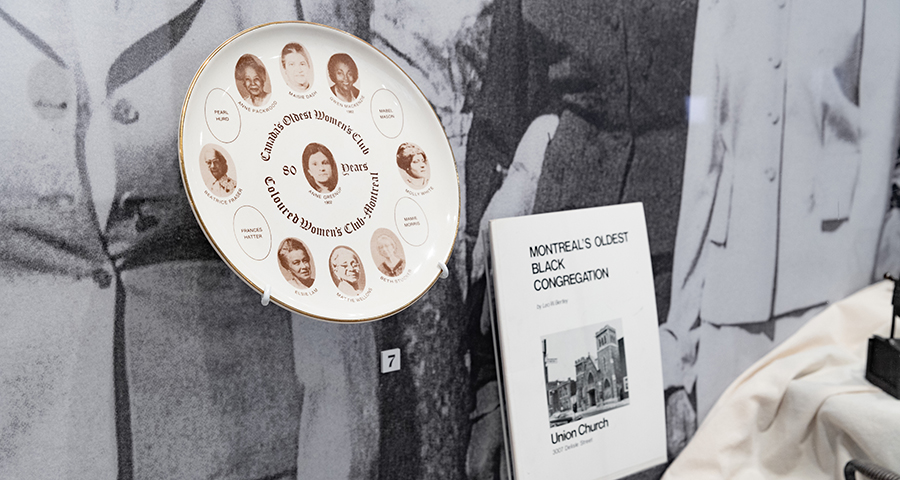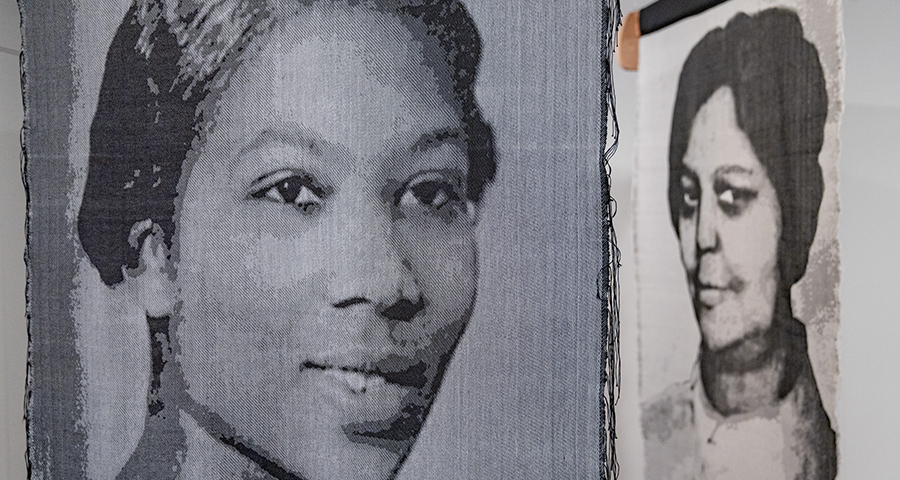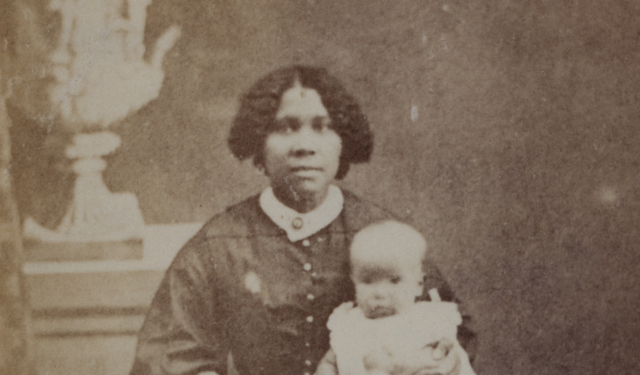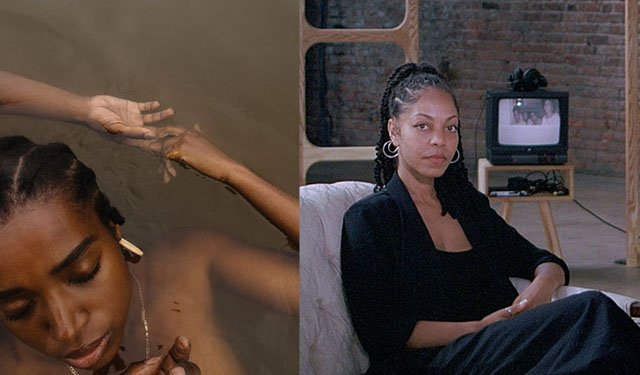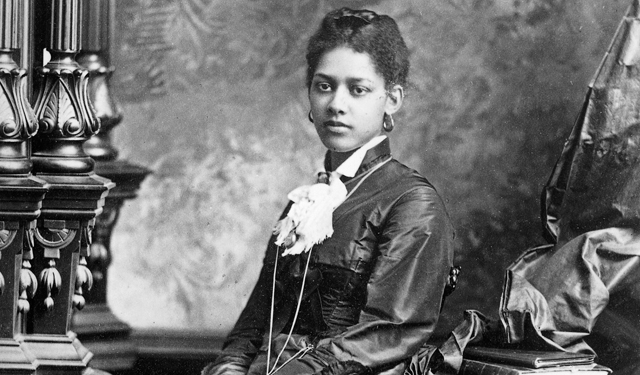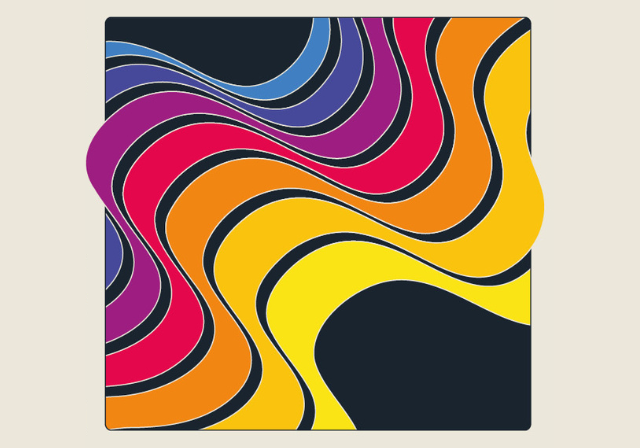Artist-in-residence
From September 13, 2024 to January 26, 2025
As part of its Artist-in-Residence program, the Museum presents the exhibition To All the Unnamed Women by artist and independent curator Michaëlle Sergile, a tribute to the lives of Black women in Montreal between the years 1870 and 1910.
For her first solo exhibition in a museum, the artist has created 7 original tapestries on Jacquard looms. Three of them reconstruct images selected from the Museum’s Photography collection, and four illustrate portraits of Coloured Women’s Club of Montreal (CWCM) members. Archival photographs and objects from the Museum collections complete the installation.
Through a blend of archival sources and fiction, the exhibition chronicles the origins of the first organization in Quebec to be created by Black women, the CWCM. Drawing inspiration from the notion of critical fabulation theorized by the American author Saidiya Hartman, the exhibition explores the relationship between history and archival violence.
For this exhibition project, Michaëlle Sergile explores the Museum’s collections, reflecting on the social and political context in which this foundational club for Montreal’s Black communities was created, and on the women who contributed in one way or another to its creation.
About the artist
Michaëlle Sergile is an artist and independent curator working mainly on archives from the postcolonial period, from 1950 to today. Through her artistic work, she aims to understand and rewrite the history of Black communities, and more specifically of women, through weaving. The artist uses this technique, often perceived as a craft medium and categorized as “feminine,” to question the relationships of domination linked to gender and ethnicity.
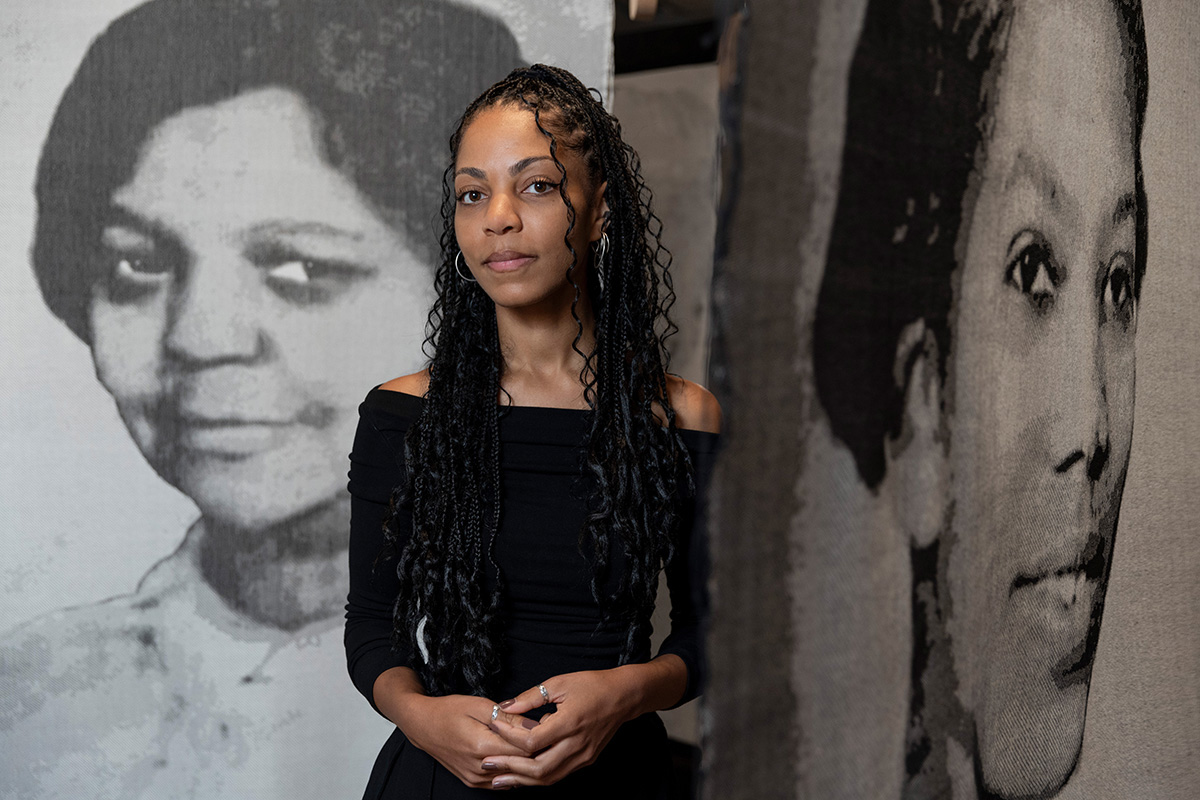
She has recently exhibited at the Musée national des beaux-arts du Québec, the Musée d’art de Joliette, the Fonderie Darling and the Off Biennale in Dakar, Senegal. Her name featured on the long list for the prestigious Sobey Art Award in 2022. In 2023 she won the visual artist of the year award at the Gala Dynastie and began a residency at the Fonderie Darling.
Artist-in-residence program
The Artist-in-Residence program invites artists to take a critical and conceptual look at the Museum’s collection, reflecting on the connections between their artistic practice and the objects and stories they uncover during their research.
As part of this research-oriented creative activity, artists are encouraged to communicate their own interpretation of the collection and propose new ways of interpreting history in its many forms.
3 things to know
The Coloured Women’s Club of Montreal
The Coloured Women’s Club of Montreal – which has been the subject of several of Sergile’s research projects – was founded in 1902 by Black women to help migrant families find housing and access financial support. It was created at a time when the names of Black women were often absent from Montreal archives.
The Museum’s Artist-in-Residence program allowed Michaëlle to deepen her historical knowledge of the organization and the women behind it by exploring the Museum’s collections. Most importantly, it’s an opportunity to introduce the public to an organization that played a key role in the development of Little Burgundy.
The exhibition also invites visitors to reflect on systemic erasure and, at the same time, on the context in which these women lived. As Michaëlle Sergile explains: “By celebrating both these nameless women and those who created the Coloured Women’s Club, the exhibition serves as a space for reflection, inviting the public to participate in reconstructing their stories.”
Critical analysis of the collections
This project was produced for the Artist-in-Residence program, which invites artists to take a critical, conceptual look at the Museum’s collections. It was an opportunity for Michaëlle Sergile to explore the Museum’s Photography collection in search of images of Black women who lived between 1870 and 1910.
Michaëlle observed that, regardless of their social status, the vast majority of these women remained anonymous in the rare evidence preserved of their existence, making it difficult to identify them today.
Weaving archives
For Michaëlle Sergile, creation is a way of confronting the limitations of archives, of imagining and fully recognizing the lives of individuals of whom we have only a few traces. Weaving was an obvious choice as a medium for expressing the realities of the Black women featured in the exhibition, as many parallels can be drawn between the themes addressed and weaving. Often associated with handicrafts, this medium is still rarely used by artists. As proof, only 3 computer-assisted Jacquard looms – used by Michaëlle to create her works – are available in Montreal.
“When I started working with textiles, I realized there was a disconnect between the visual arts and craft, as if the two notions couldn’t coexist. I thought it fitted in very well with the way I conceptualized archives, because I was very interested in anything that’s put aside. I felt that the medium of weaving itself was being sidelined. I liked that the word métissage (“racial mix”) contains tissage (“weaving”), just like text and textile.”
Acknowledgements
The Museum would like to thank its team and all those who have contributed towards the presentation of this exhibition.
Project management
Caroline Truchon, Project Manager, Exhibitions
Curating
Mathieu Lapointe, Curator, Archives
Graphic design
David Martin
McCord Stewart Museum team
John Gouws, Chief Technician, Exhibitions
Mélissa Jacques, Technician, Exhibitions
Olivier LeBlanc-Roy, Technician, Exhibitions
Patrick Migneault, Technician, Exhibitions
Guislaine Lemay, conservatrice, Curator, Material Culture
Zoë Tousignant, Curator, Photography
Caterina Florio, Head, Conservation
Sonia Kata, Conservator
Geneviève Déziel, Cataloguing Coordinator, Collections Management
Camille Deshaies-Forget, Assistant, Collections Management
Josianne Venne, Senior Technician, Collections Management
Karine Rousseau, Head, Collections Management
Ana Prasser, Archivist
Anne-Frédérique Beaulieu-Plamondon, Officer, Digital Outreach, Collections and Exhibitions
Roger Aziz, Photographer
Leila Afriat, Officer, Community Relations, Education
Elysa Lachapelle, Project Manager, Education, Community Engagement and Cultural Programs
Philippe Bergeron, Officer, Digital Engagement
External team
Editing and translation
Pascale Guertin
Judith Terry
Graphic production
Graphiscan
Installation
Espace Montage inc.
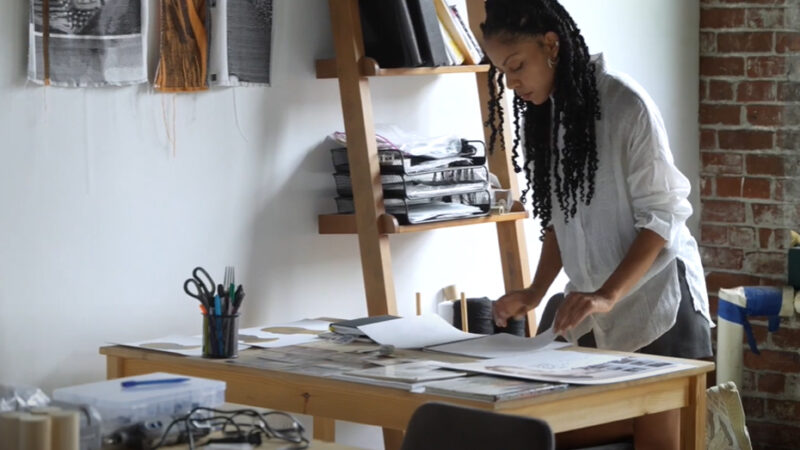
Discover Michaëlle Sergille’s artistic process and the way she has made use of critical fabulation through weaving. She tells us about the works she created for the exhibition, and about the images and objects featured in the gallery.
Be an insider!
Subscribe to our newsletter to get the inside scoop on upcoming exhibitions and cultural events.
Subscribe now

